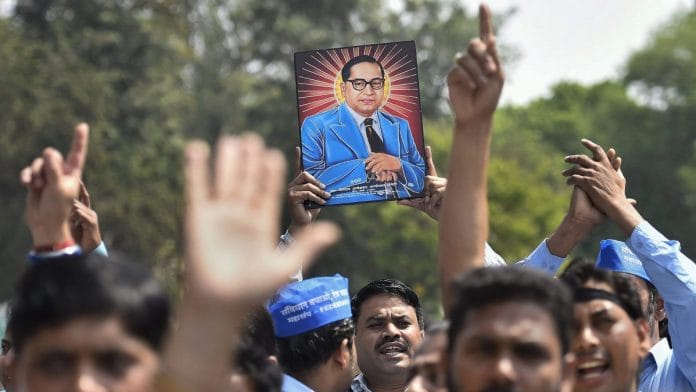Thank you dear subscribers, we are overwhelmed with your response.
Your Turn is a unique section from ThePrint featuring points of view from its subscribers. If you are a subscriber, have a point of view, please send it to us. If not, do subscribe here: https://theprint.in/subscribe/
ThePrint recently wrote an article on how difficult it had been for a dalit panchayat president to take oath. Not a day goes without instances of discrimination based on caste or gender. We have definitely come a long way in ensuring equality, but we have a lot more to cover. The question is who will lead us in that endeavour. And what is the missing piece of the social reform puzzle?
A rich history of reform movements in India’s history
India’s history is replete with examples where society responded to all of these issues. The Bhakti movement saw the rise of poet-saints who stressed on devotion to God and rejected caste discrimination. They made devotion to God a lot more accessible, and emphasised on social equality. From both gender and caste point of view.
Mirabai, Kabir, Ravi Das, Ramanuja, Alavars, Nayanars, Chaitanya Mahaprabhu and many others from across India rose to shake the society from its slumber.
In more recent history, Swamy Vivekananda, Raja Ram Mohan Roy, Ishwar Chandra Vidya Sagar, Viresalingam Pantulu, Ambedkar, and many others fought for an India free of human suffering and discrimination. Leaders of India’s freedom movement saw social reform as an integral part of the struggle. Gandhi, Savarkar, Ambedkar, the revolutionaries and many others dreamt of universal brotherhood of Indians where everyone had equal stake in India’s destiny.
The question is : Who will lead us now in our reform journey? Societies that figure this out survive and thrive.
A disappointing social reform trajectory post 1947
The issues of gender and caste discrimination share a common root: a decline in the society’s social reform spirit. First, the advent of a centralised planning state sapped the society of any initiative. Second, the fight for empowerment has been reduced to just the issue of representation. These two, combined with a morally bankrupt political class, have managed to put India into a state of slumber where the society has given up on working on itself.
Post 1947, we saw caste mobilisations seeking more representation, but collectively, no one seemed to care about the larger goal of annihilation of casteism. Most Indian political ideologies and their ideologues have been anti-caste. Why didn’t it go away then?
It is no different for issues of women. Women’s issues find resonance across India cutting across the usual social cleavages. Still, most women face threats of violence, discrimination, or an unfair trade-off between safety and freedom.
How is it that there is no organised, concerted effort to address attitudes and prejudices that keep the discrimination based on caste and gender alive? And, Who will lead that effort?
The missing economic piece of the puzzle
India has mostly relied on politics of representation as the antidote to social ills. The fight for representation is indeed noble. However, where is the economic aspect of this fight?
India’s failure to industrialise and free all of its economy from the clutches of the state has stalled its social progress too. There’s a lot of similarity between serfdom and India’s social structure. Though not totally the same, it is similar. Hence, it is important we understand what led to the end of serfdom in Europe. It wasn’t the king or the state. It was private capital which saw not a man’s social strata but his skills to add value to generate profits. Sure, there were philosophers/thinkers who advocated for individual rights. But would they have gotten any attention without the help of those who put up an economic case for individual rights and equality?
The farm laws gamble was an important one. It would have single handedly changed the face of rural India. The private capital would have ended the dominance of dominant land owning groups who have a stake in ensuring the status quo. Certainly, some compromises could have been made to make the reforms more acceptable. But, those who celebrated their rollback as Modi’s defeat missed the potential of these reforms.
Had we reformed and industrialised much earlier, would we have seen the crisis of jobs or falling agricultural returns which led to mandal mobilisation in the past or calls for caste census now? Is the lack of meaningful economic growth hardening our social cleavages where groups use identity based mobilisations to bargain for a slice in a slow growing economic pie? I think yes. Can we then dream of annihilation of caste?
The system now seems in a complete static state. The political class is happy to keep this mirage of more representation as an antidote to all our problems. The people are happy because they are not forced to look within to introspect and seek meaningful change in attitudes and mindsets. Any major reform, economic or social, is unlikely to receive the support it needs.
These pieces are being published as they have been received – they have not been edited/fact-checked by ThePrint.


